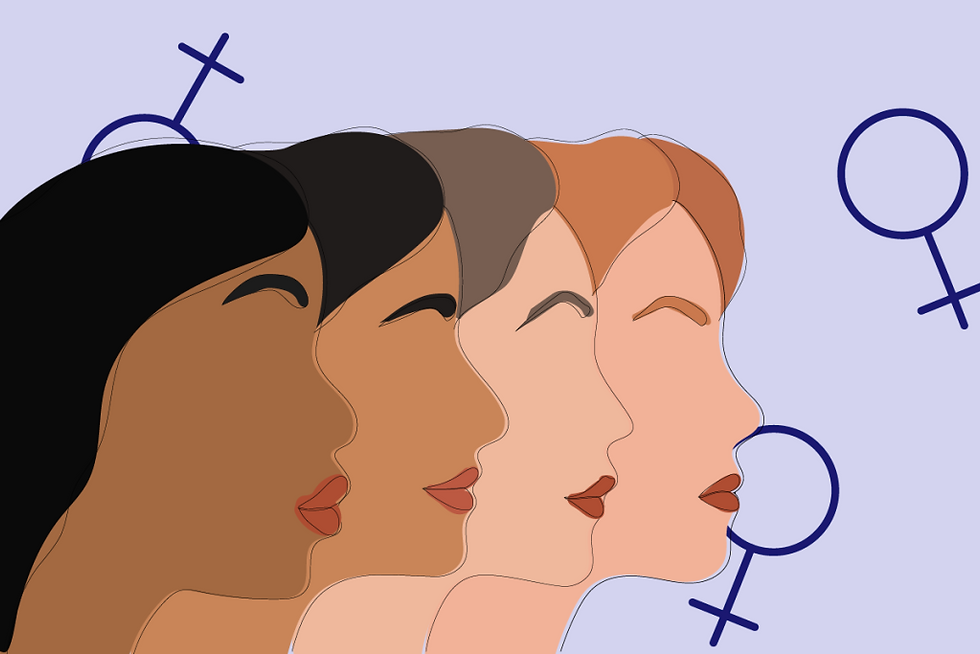Women Built PR. History Just Didn’t Give Them Credit.
- Erica Freeze
- Feb 28
- 3 min read
Women have shaped public relations since its earliest days, yet history has largely credited men, leaving a lasting gap in recognition and leadership that persists in the industry today.

When I look at the public relations industry today, something doesn't add up. About 75% of PR professionals are women, according to the Bureau of Labor Statistics. Yet somehow, leadership roles and our industry's historical narrative don't reflect this reality.
The Women Who Defined PR
Most PR textbooks celebrate men like Edward Bernays and Ivy Lee as the "founding fathers" of public relations. Their contributions matter, no question. But our industry's story has some major missing chapters.
Betsy Plank, often called the “First Lady of PR,” fought to make PR a respected profession. She was the first female president of the Public Relations Society of America and a key advocate for PR education. Without her, PR would not have the same professional standards it does today. The Public Relations Student Society of America, which she helped establish, continues to support students entering the industry.
Doris Fleischman helped shape modern PR strategy while working alongside her husband, Edward Bernays. She led campaigns, wrote extensively on PR’s role in society, and was a strong advocate for women in business. In 1925, she became one of the first women in the United States to keep her maiden name on a passport, pushing societal norms at a time when professional women were often expected to remain in the background. Despite her impact, she is rarely mentioned in discussions about PR’s origins.
Inez Kaiser broke barriers on multiple fronts. In 1957, she became the first Black woman to own a public relations firm in the United States, running Inez Kaiser & Associates. She advised major corporations at a time when few firms—let alone those led by women of color—had access to large corporate clients. Her success paved the way for greater diversity in PR, yet her name is far less recognized than it should be.
These are only a few examples. Women have played a major role in PR from the beginning, yet their names remain far less recognized than their male peers.
The Recognition Gap
Despite women making up most of the PR workforce, a 2023 report from the Institute for Public Relations found women hold only about 20% of top leadership positions in agencies and corporate communications teams.
The pay gap is equally troubling. Women in PR earn about 86 cents for every dollar their male counterparts make, with the gap widening at higher levels.
There's a certain irony here. An industry built on shaping narratives has failed to fully tell its own story. Women have led historic campaigns, guided organizations through crises and transformed how businesses communicate. Yet recognition consistently flows elsewhere.
Rewriting the Narrative
As PR professionals, we shape narratives every day. It's time we applied that skill to our own industry's story.
History often credits the loudest voices rather than the most impactful ones. Women built this industry, yet their influence has been treated as secondary rather than foundational.
When we examine why women's contributions to PR have been systematically minimized, we uncover the roots of today's challenges. Today's executive boardrooms didn't suddenly become male-dominated; they inherited a legacy where women's expertise was valued but rarely elevated. The salary disparities and the struggle for women's voices to be heard in industry conversations aren't isolated modern issues. They're symptoms of how our industry has always operated, reflecting values set in motion generations ago.
The way we tell our history shapes our industry's future. When we highlight the women who shaped PR from the beginning, we create space for more equity and recognition today. It's time to tell the complete story of public relations - not just the parts that have been convenient to remember.

Comments